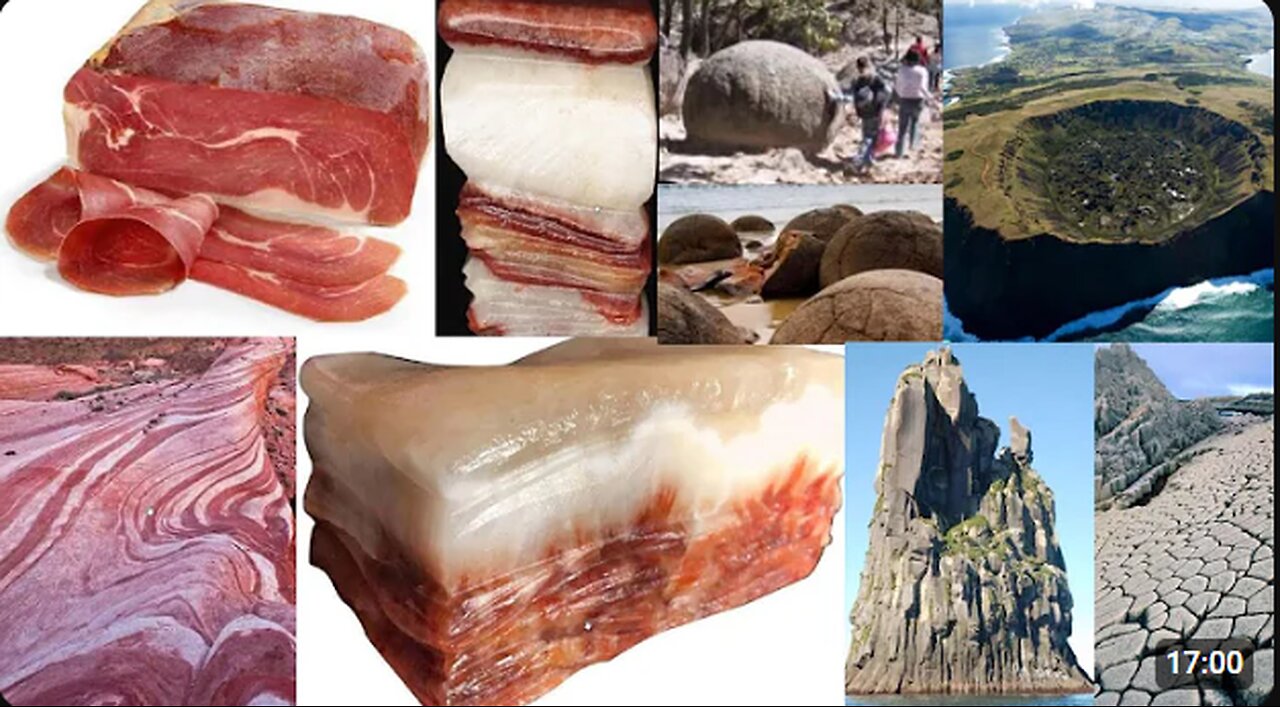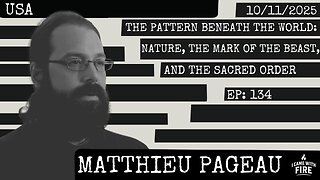Premium Only Content

What You Need To Know About PETRIFIED ANIMALS, TREES, AND GIANTS
Petrification, or fossilization, is the process by which organic material is gradually replaced by minerals, turning plants, animals, and other organisms into stone. Petrified animals and trees are fascinating remnants of ancient life that provide valuable insights into the Earth's history.
Petrified Trees
Petrified trees are the most common and well-known examples of petrified organisms. The process of petrification begins when a tree or plant is buried under sediment, such as volcanic ash or mud, shortly after its death. This burial prevents the decomposition of the organic material. Over time, groundwater rich in minerals like silica, calcite, or pyrite permeates the plant's tissues, slowly replacing the organic material with minerals. As the plant's cells are replaced, the tree's structure is preserved in exquisite detail, including the bark, growth rings, and even cellular structures.
The result is a fossilized tree that has turned to stone but retains the original shape, texture, and sometimes even the color of the wood. Some petrified wood exhibits stunning, multicolored patterns caused by different minerals.
Notable Petrified Forests:
Petrified Forest National Park (Arizona, USA): One of the most famous petrified forests, home to large petrified logs from the Late Triassic period, around 225 million years old.
Lesbos Petrified Forest (Greece): A UNESCO Global Geopark, this site contains fossilized trees dating back 20 million years, some of which are still standing upright.
Ginkgo Petrified Forest (Washington, USA): This forest has a unique variety of petrified trees, including ancient ginkgoes and conifers.
Petrified Animals
While petrified trees are more common, petrified animals can also occur, although this process is rarer due to the more complex structure of animal tissues.
When an animal is quickly buried after death, for example by volcanic ash, sediment, or in an oxygen-poor environment, the same process of mineral replacement can occur. The organic tissues of the animal, such as bones, teeth, and sometimes even soft tissues, are gradually replaced by minerals like silica, calcite, or iron, preserving the animal in stone. In rare cases, details like muscle tissue, skin, or feathers may be fossilized if the conditions are just right.
-
 3:20
3:20
TOWERCLIPS
11 months agoGravity Energy Machine
1382 -
 2:07:47
2:07:47
LFA TV
15 hours agoTHE RUMBLE RUNDOWN LIVE @9AM EST
67.3K6 -
 2:20:46
2:20:46
I_Came_With_Fire_Podcast
10 hours agoThe Pattern Beneath the World: Nature, The Mark of the Beast, & the Sacred Order
18.5K14 -
![Mr & Mrs X - [DS] Antifa Are Planning An Insurrection,Trump Has Prepared The Counterinsurgency-EP 11](https://1a-1791.com/video/fwe2/6b/s8/1/k/3/R/p/k3Rpz.0kob-small-Mr-and-Mrs-X-DS-Antifa-Are-.jpg) 49:56
49:56
X22 Report
5 hours agoMr & Mrs X - [DS] Antifa Are Planning An Insurrection,Trump Has Prepared The Counterinsurgency-EP 11
52.1K48 -
 1:08:57
1:08:57
Wendy Bell Radio
9 hours agoPet Talk With The Pet Doc
50K27 -
 8:47
8:47
Demons Row
2 days ago $1.63 earnedI Spent $50,000 Building My Dream Harley-Davidson 😳💀 (Learn From My Mistakes)
43.9K10 -
 38:18
38:18
SouthernbelleReacts
23 hours ago $1.94 earnedThey Thought the Secret Was Buried… But I’m Screaming! | Reaction to I Know What You Did Last Summer
32.5K1 -
 29:37
29:37
Midwest Crime
1 day ago5 Cops Shot as Minnesota Raid Turns into Chaos
59.6K165 -
 31:08
31:08
mizery
17 days ago $0.58 earnedI Asked 100 Pros To Help Me Go Pro...
15.6K3 -
 7:03:56
7:03:56
FyrBorne
17 hours ago🔴Battlefield 6 Live M&K Gameplay: A Return to Form for This Former Giant
23.5K